The various diseases of the Middle Ages ravaged the lives of millions. From plague to tuberculosis, it seems like threats lingered behind every corner. A combination of bad diet, poor hygiene, inadequate sanitation and an ill-informed understanding of medicine left many people vulnerable to fatal infections and diseases in the Middle Ages.
Medieval diseases, such as bubonic plague even live on today. And as we’ve experienced with the coronavirus pandemic, it can be very much a crazy time when illness is rife.
Other diseases that were rife in the Middle Ages included malaria, dysentery, Diptheria (a bacterial infection), typhoid, flu, smallpox, and leprosy. All could cause death, though thankfully, this is much rarer in modern times.
Killer Diseases In The Middle Ages And The Fantasy Genre
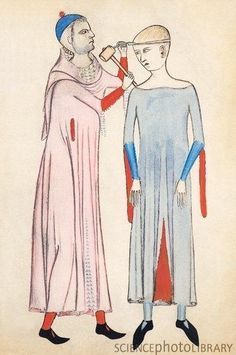
Given many fantasy stories have a medieval setting, diseases would arise in a secondary world. As we’ll see, this presents interesting opportunities for the fantasy writer. And with your own experience of living during a pandemic, you can apply an extra layer of insight.
This article will begin by looking at the circumstances in which diseases can manifest and spread, before turning to look at specific diseases which claimed the lives of many Europeans during the Middle Ages. We’ll also look at some other fantasy writing guides, such as on medieval weapons and the lives of lords.
The Causes Of Diseases In The Middle Ages
As mentioned above, there were many causes of medieval diseases. It can be quite tricky to identify one definitive cause, simply because life as a whole was quite dirty, with little knowledge and understanding of hygiene.
Most peasants, for example, only got a few baths a year. And without access to clean water, many were forced to drink the likes of mead while they worked. This may have made those laborious shifts tilling the fields a bit more bearable, but from a health perspective, dehydrating your body like that every day is going to cause problems and leave you exposed to killer diseases in the Middle Ages.
Medieval Sewage Systems
For people living in cities and bustling towns, sewage disposal was a problem. Most used a latrine, which was the most basic of toilets—often a crude frame or shed above a pit or cesspool—usually shared by a number of families. For the very poor, you wouldn’t even have a shed. For the rich, latrines looked something like this:

Cesspools filled over years which created health problems, the main one being the contamination of water sources. There’s even a tale of one poor bastard known as Roger the Raker who fell through the rotted floorboards of his latrine to drown in his own excrement.[i] People, naturally, sought ways to empty their cesspools. In 1347, two men were fined for dumping sewage in their neighbour’s cellar.[ii]
To give you a clearer idea of the state of affairs, here’s a quote from King Edward III:
“When passing along the water of Thames, we have beheld dung and lay stools and other filth accumulated in diverse places within the city, and have also perceived the fumes and other abominable stenches arising therefrom, from the corruption of which great peril to persons swelling within the said city will, it is feared, ensue.”[iii]
Hygiene
It’s safe to say people weren’t too fussed about washing their hands after stepping out of the latrine. Soap did get some recognition in the latter part of the Middle Ages, though. In the fifteenth century, a white soap was produced, made from fern ash, unslaked lime, oil, tallow, and bean flour.[iv]
One big problem for people trying to wash was access to clean water. Most water came from rivers, lakes, streams, springs and wells, all of which could be contaminated either by cesspools or people disposing of waste. Butchers, tanners and dyers all dumped their waste in watercourses. It was the most convenient method of disposal. Either they didn’t understand the damage it would cause them or they didn’t care.
Further Reading: The Peasantry Of The Middle Ages
Medieval diseases and medicine
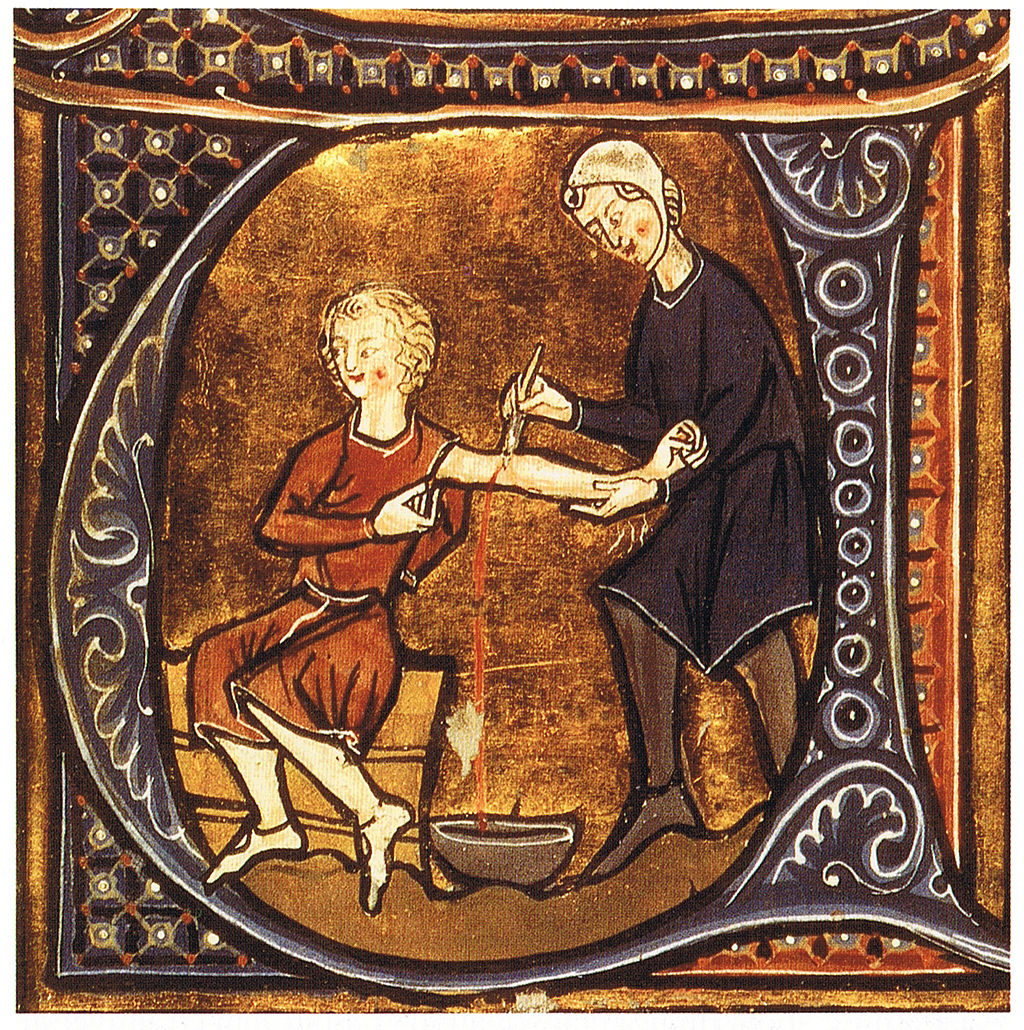
Nobody during the Middle Ages had an understanding of disease and infection which comes close to ours. That’s not to say medieval people were ignorant, though.
Smell guided many people’s judgements. A foetid smell was a bad sign. The spreading of germs was unknown, so too how blood circulated around the body.[v]
The role of God played a big part in disease. Many people perceived the afflicted as being punished for their sins, something known as ‘divine judgement’.[vi]
Others turned to astrology to find answers for medical problems, with references made to planetary movements triggering disease. There were even some bizarre numerological methods, one being the Sphere of Apuleis, which involved assigning a numerical value to each letter of a person’s name and subtracting thirty from the total. A determination was made as to whether the patient will live or die depending on the result.[vii] Science.
Join an online writing group
If you’re looking for more help and guidance with your novel or story, why not join my community of writers? With access to our writing group, you can ask questions, get feedback on your own ideas, and build friendships with writers from all over the world.
Click below to find out more.
Medieval Diseases
Below, we’ll take a look at some of the main diseases in the Middle Ages, from the Great Plague to tuberculosis. Quite a few of these so-called medieval diseases continue to exist today. Thankfully some of them have died out.
The Great Plague – One Of The Deadliest Diseases in The Middle Ages
“Go quickly, go far, and return slowly.” Guy de Chauliac, advice on avoiding the plague.
The Great Plague (known as the Black Death from the nineteenth century onwards, and also known as the ‘medieval plague’) first struck English soil in the 14th century, around 1348. It wiped out between 40% and 50% of the population.[viii]
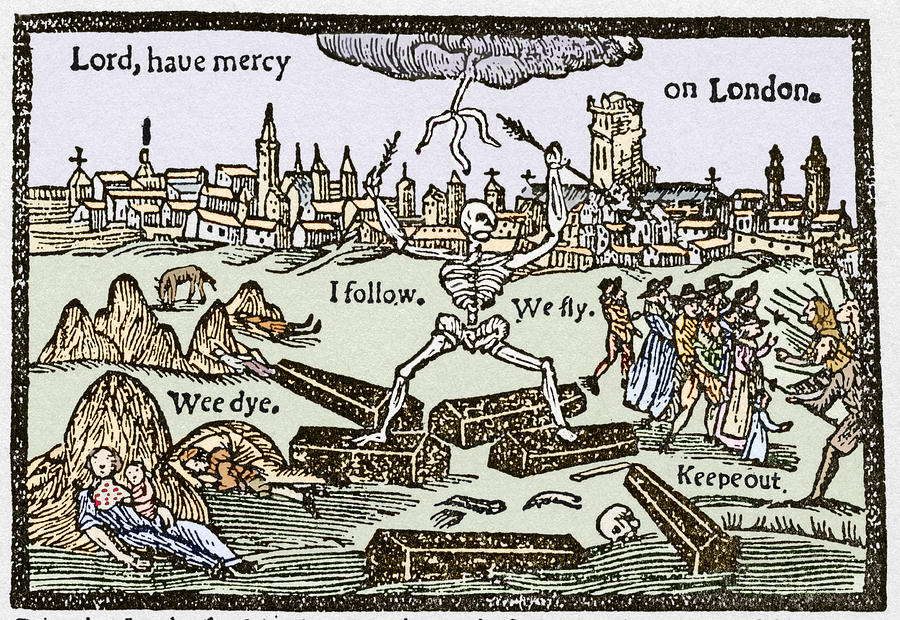
Discussing mere statistics does not give an insight into what life would have been like during such a time. Historian, Ian Mortimer, envisages it vividly:
“In the fields lie dead and rotting sheep, five thousand in one alone, according to Henry Knighton … You look around and see ravens flying through deserted streets, and half-wild dogs and pigs eating corpses abandoned on the edge of a village … The doors of houses left blackly open.”[ix]
To those who witnessed the effects of the plague, it would have seemed like the end of days, the abandonment of mankind by God. Nobody could help; doctors, monks, nuns or priests. Men and women buried their spouses and children, often without any religious service—there was no time for that, and often few monks left alive to perform it.
The papal physician, Guy de Chauliac, noted the symptoms. The first sign was a fever and spitting of blood. Some people died at this stage within a matter of hours or days. If unfortunate enough to survive longer, boils and black buboes formed at the lymph nodes at the groin and armpit. Survival beyond this point was very unlikely. It was spread through coughing and sneezing and, famously, through infected rats.
“If … you are beginning to feel feverish, lift up your arm and start tapping around your armpit: if something makes you wince, prepare for the final hours of your life.”[x]
This quote provides a brutal insight into diseases in the Middle Ages.
Leprosy

This is one of the more infamous medieval diseases. When we hear the term ‘leprosy’ we think of the horrific flesh-eating illness which turns the living into the walking dead (known today as Hansen’s Disease)[xi]. Back in the Middle Ages, any kind of skin disease was classed as leprosy, including eczema, dermatitis, or psoriasis. This wasn’t through ignorance, but rather fear.
One of the first symptoms of leprosy was a numbing of the extremities, before complete paralysis. This causes ulcerations and after a few years, fingers and toes rot away. All body hair falls out, penises putrefy and at some point the bridge of your nose collapses, leaving a gaping wound. Eyeballs may become ulcerated too, causing blindness, and ulcers can form in the throat, affecting speech. Medieval lepers were left deformed, stinking, crippled and blind.[xii]
It’s understandable why people were terrified of catching it, and it was contagious, spread through skin contact, coughing or sneezing. Extreme measures were put in place to prevent the spread. Lepers had to wear a covering cloak and wherever they went had to ring a bell to warn others of their coming. No sympathy was afforded. The affliction was seen as divine judgement for a sinful life.[xiii] Just imagine how this must have felt. Shunned by your family and friends and left to fend for yourself at a time of great need.
Tuberculosis
This disease came in various forms. One was known as the ‘King’s Evil’, an infection of the lymph nodes in the neck causing them to swell to grotesque sizes. Another type is pulmonary tuberculosis which provokes an increasingly violent cough. The disease eats away at your resistance until at last you succumb to exhaustion and die. By far one of the nastiest diseases of the Middle Ages.
TB could be contracted in different ways. The most common was drinking infected cows milk. It was also transmitted aerially through talking, coughing, sneezing. The only effective remedy was to keep up your strength.[xiv]
Other diseases in the Middle Ages
Besides the three big hitters above, other diseases included malaria, though this affected only those living in swamplands.[xv] There was a fatal disease known as the ‘sweating sickness’, which was most likely a form of influenza.[xvi] And there were other more bizarre illnesses too, such as a widespread and repugnant sickness which made men emit ‘a sound like dogs barking, and suffered almost unbearable pain while it lasted.’[xvii] This could have been a form of tonsilitis.
Medieval diseases and fantasy writing
Perhaps the most well-known fantasy disease is greyscale in George R.R. Martin’s A Song of Ice and Fire/Game of Thrones, a sickness very similar to the plague.
Disease is a great source of conflict. The attitudes of characters may change toward sufferers and the lives of characters may alter because of diseases.
It should not be forgotten how desperate and helpless the families of the afflicted must have felt. Who doesn’t love a story of a daring mission to obtain a cure to save the life of the one you love?
Exploring these diseases in more detail may unlock some original ideas for you to feature in stories of your own. And remember: always wash your hands.
What are your experiences of diseases in the fantasy genre? Do you think they’re underused? Annoying? Would you like to see more of it? Comment below!
More fantasy writing guides
Before I leave you, I wanted to point you in the direction of a few fantasy writing guides which you may find useful.
To learn more about worldbuilding, head here. You can find lots to help inspire your own incarnation of diseases in the Middle Ages.
For more understanding of fantasy archery, see this guide.
And I also have a dedicated guide to fantasy and medieval armor, and another on Roman battle tactics to help inspire your stories and fight scenes.
This guide on illnesses in the Middle Ages may also be useful.
References To The Guide On Killer Diseases In The Middle Ages
[i]Pg. 104, ‘Life in the Middle Ages’, M. Whittock (2009).
[ii]Pg. 104, ‘Life in the Middle Ages’, M. Whittock (2009).
[iii]Pg. 114, ‘Life in the Middle Ages’, M. Whittock (2009).
[iv]Pg. 112, ‘Life in the Middle Ages’, M. Whittock (2009).
[v]Pg. 190, ‘The Time Traveller’s Guide to Medieval England’, I. Mortimer (2009)
[vi]Pg. 190, ‘The Time Traveller’s Guide to Medieval England’, I. Mortimer (2009)
[vii]Pg. 192, ‘The Time Traveller’s Guide to Medieval England’, I. Mortimer (2009)
[viii]Pg. 202, ‘The Time Traveller’s Guide to Medieval England’, I. Mortimer (2009)
[ix]Pg. 203, ‘The Time Traveller’s Guide to Medieval England’, I. Mortimer (2009)
[x]Pg. 201, ‘The Time Traveller’s Guide to Medieval England’, I. Mortimer (2009)
[xi]Pg. 204, ‘The Time Traveller’s Guide to Medieval England’, I. Mortimer (2009)
[xii]Pg. 204, ‘The Time Traveller’s Guide to Medieval England’, I. Mortimer (2009)
[xiii]Pg. 204, ‘The Time Traveller’s Guide to Medieval England’, I. Mortimer (2009)
[xiv]Pg. 206, ‘The Time Traveller’s Guide to Medieval England’, I. Mortimer (2009)
[xv]Pg. 207, ‘The Time Traveller’s Guide to Medieval England’, I. Mortimer (2009)
[xvi]Pg. 119, ‘Life in the Middle Ages’, M. Whittock (2009).
[xvii]Pg. 121, ‘Life in the Middle Ages’, M. Whittock (2009).
That about wraps up this guide to medieval diseases. I hope you’ve learned something new. I often turn to history to help find inspiration for my fantasy stories, so that’s why I put this together, to help you and also to save you time having to do research.
Thank you for stopping by this guide on killer diseases in the Middle Ages. If you have any questions, please contact me.
- 5 Tips to Help Your Child Learn and Succeed at Primary School - February 26, 2024
- The Advantages Of Using An AI Essay Typer Alternative - February 14, 2024
- Advice On Getting Help With Your Homework - January 26, 2024



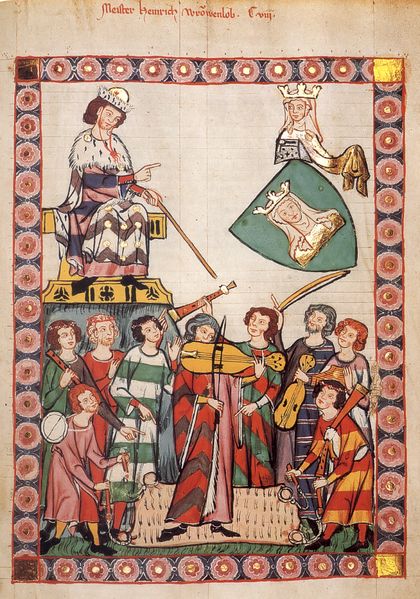
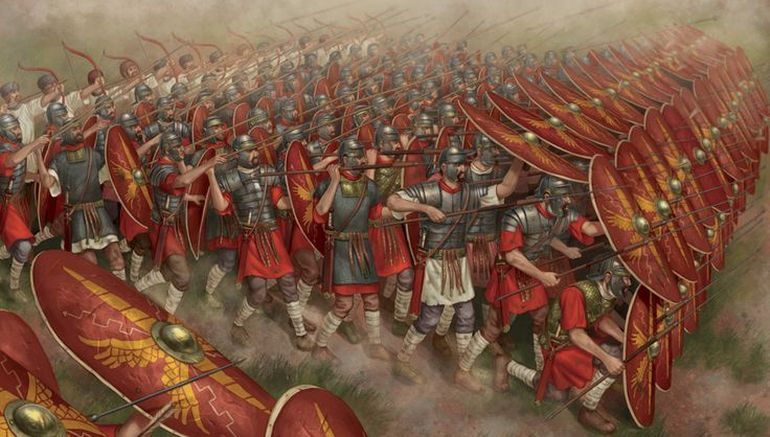

I like the idea of an “incurable disease”, and would like to see it in wider use on protagonists – as in, something that the protagonist struggles with, like a persistent infection or tuberculosis, one which never goes away. We’re always told to introduce a fault to our heroes, but all too often a mental or spiritual fault is implied, I think!
What I do NOT like is disease used to signal moral or spiritual rottenness. Away with disease shaming! 😀 Anyway, thanks a lot for the thought-provoking post, once again!
Thank you for your comment, Alice and sorry for the delay! I think that’s a great idea. GRRM dabbles with greyscale and it makes for a very engaging story line. Thank you for reading!
Awesome post. It’s amazing how our knowledge of disease has advanced. Penicillin made a gigantic change to society and not even that long ago. My ex-mother-in-law’s brother died of an ear infection as a child, something unheard of today. It’s no wonder that 500 years ago the average age-expectancy was 29.
Sadly, with the arrival of antibiotic resistance, those times may be coming back. 🙁
True! That’s a scary thought, Alice. Mankind frequently seems to take a good thing too far and becomes its own worst enemy.
Word!
Thank you! I’m glad you found it helpful. It is quite incredible how vulnerable we all were and not even that long ago, like you say. It just shows how vulnerable we are, but how quick we can learn. Thanks for reading!
During the Middle Ages, people often turned to apothecaries and pagan healers who had ancient knowledge of how to cure various ailments with tinctures and herbs. Unfortunately, the Church branded these healers as witches and disbelievers. Many burned at the stake for performing their ‘magic’. This culling of knowledge was another major (political-spiritual) factor into the rise of diseases.
That’s an excellent point. It makes sense that the poorer people turned to pagan healers and like you say, we’ve probably lost a lot of good knowledge that they held. A terrible shame. Thank you for reading and commenting!
When writing a historical/fantasy story, I feel like disease is the easiest form of justifiable “deus ex machina”.
With so little understanding about disease, it’s easy to casually create a cause and insert a disease to shift the tides of a conflict, trap characters within a region, or force them to go around, delay in their arrival.
I also think disease offers great opportunities for character reveal, whether someone insists on trusting the divine, is open to many possibilities, or harshly dismisses faith as irrelevant.
There was “side sickness” too, which I believe was appendicitis. I think the eating of stone ground grain, with bits of stone joining the flour, was a not uncommon, deadly illness.
Malaria, it’s thought, has been the disease that killed most of the humans throughout history. I forget where I round it but of the 100 billion humans that have lived (8 billion still alive) something like 20% of them died from malaria.
Fun times.
Pingback: The Medieval Lord - The Complete Guide | Richie Billing
Pingback: How To Make A Fantasy Map - The Essential Guide | Richie Billing